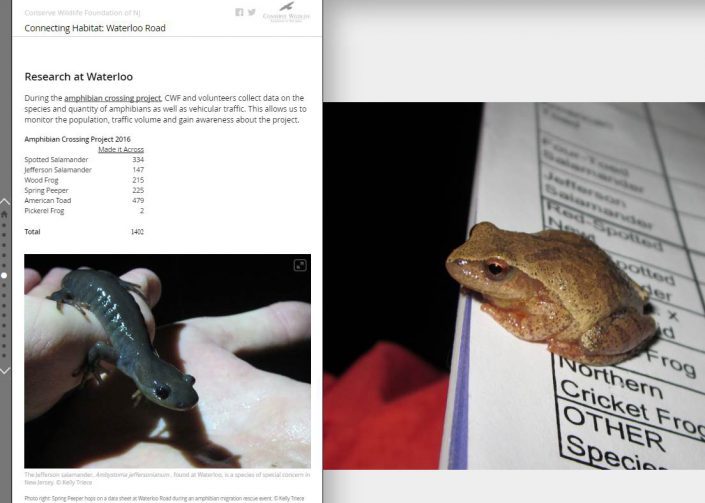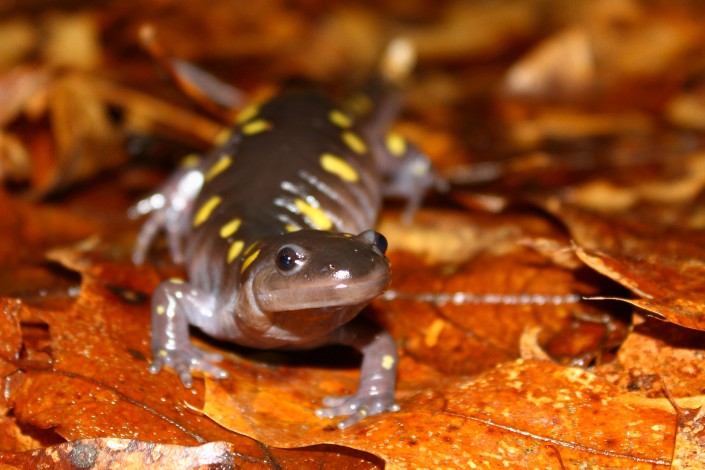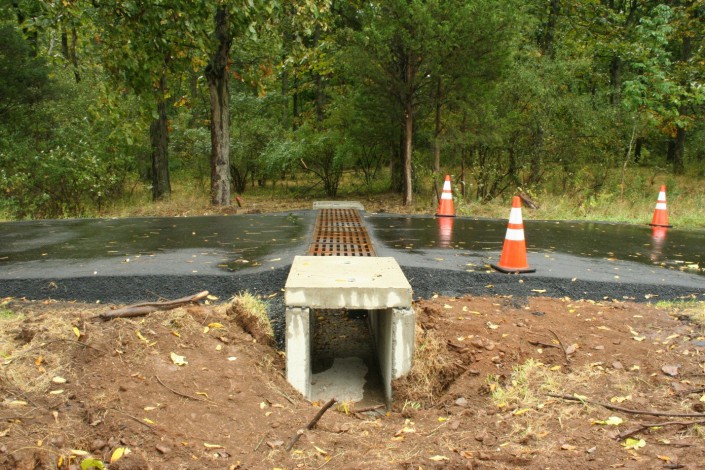Connecting Habitat: Waterloo Road
Conserve Wildlife Foundation Releases New Amphibian Crossing Story Map
by Kelly Triece, Wildlife Biologist

Farewell to May — also known as Wetlands Month! As a final ode to Wetlands Month, Conserve Wildlife Foundation would like to share a story about a very special wetland! Please check out our latest Story Map: “Connecting Habitat: Waterloo Road.” This story map shares the story about a vernal pool wetland that is located at Waterloo Village History Site in Byram Township, Sussex County, New Jersey.

This vernal pool wetland, as depicted in the Story Map, is a breeding ground for thousands of amphibians. However, each spring these amphibians must cross the heavily trafficked Waterloo Road in order to reach the pool. A single vehicle can crush dozens of the slow-moving animals as they try to cross the road during migration. High enough traffic volumes can wipe out entire populations over time.
Since 2002, Conserve Wildlife Foundation of New Jersey has worked to protect early-spring breeding amphibians like the wood frog, spotted salamander, Jefferson salamander, and spring peeper during their annual migrations through the Amphibian Crossing Project. On peak nights each spring, we work with a fleet of incredible volunteers to hustle amphibians across the road at rescue sites, collect data on the numbers and species seen, measure the impacts of vehicular traffic, and document additional amphibian crossings for future protection.
This is our 2016 Waterloo Road Amphibian Crossing Report:
- Spotted Salamander: 334
- Jefferson Salamander: 147
- Wood Frog: 215
- Spring Peeper: 255
- American Toad: 479
- Pickerel Frog: 2
- TOTAL Amphibians: 1,432
The Amphibian Crossing Project aims to secure funding for amphibian crossing tunnels at Waterloo Road. This project is part of a larger effort led by the Division of Fish and Wildlife called Connecting Habitat Across New Jersey (CHANJ). CHANJ aims to identify key areas and the actions needed for preserving and restoring habitat connectivity for terrestrial wildlife in New Jersey. CHANJ has the potential to increase the sustainability of New Jersey’s terrestrial wildlife populations and de-list endangered species. #CHANJiscoming #CHANJ
We hope you enjoy our Story Map, Connecting Habitat: Waterloo Road!
Learn More:
- Check out the new Connecting Habitat: Waterloo Road Story Map
- Conserve Wildlife Foundation’s Amphibian Crossing Project
- Connecting Habitat Across New Jersey (CHANJ)
Kelly Triece is a Wildlife Biologist for Conserve Wildlife Foundation of New Jersey.



